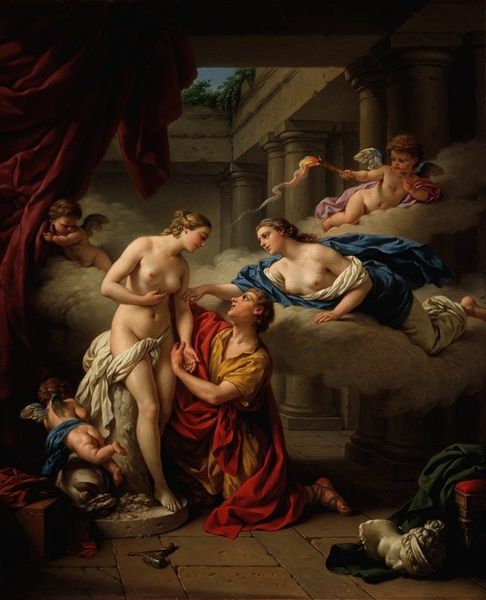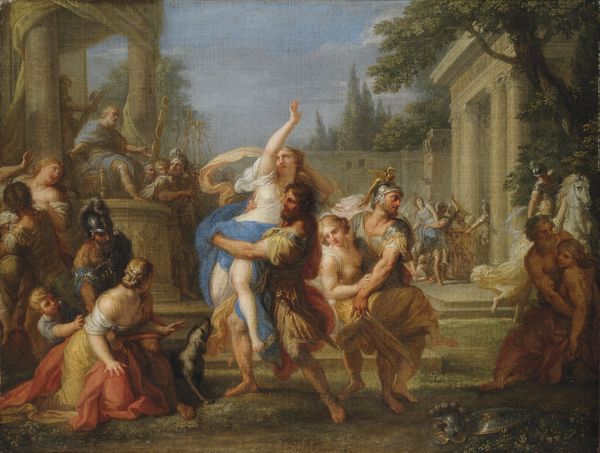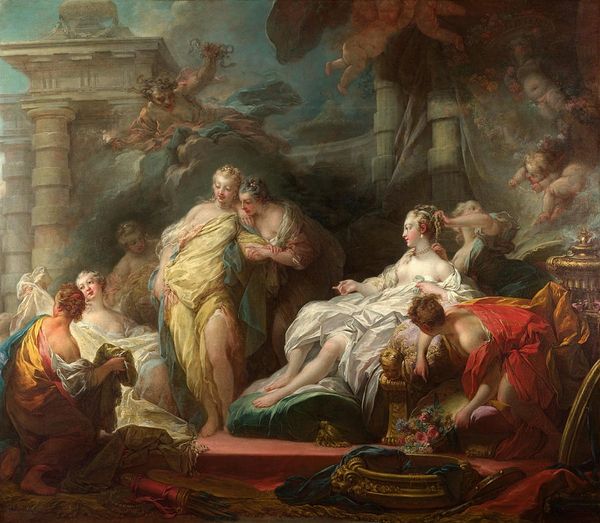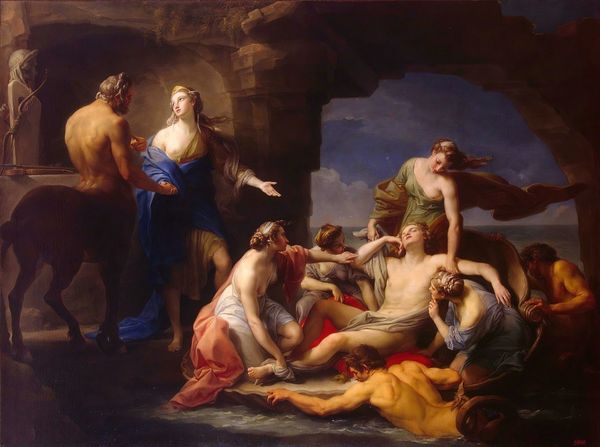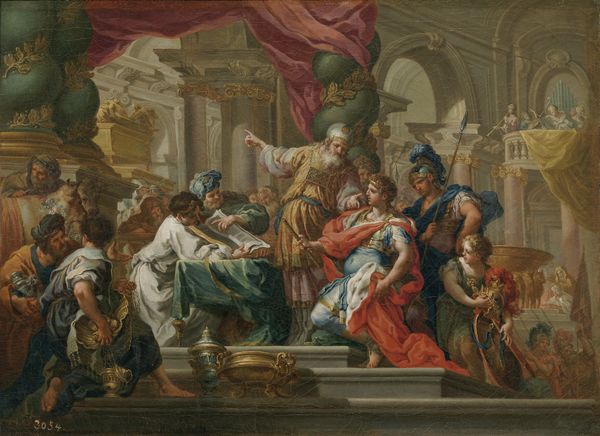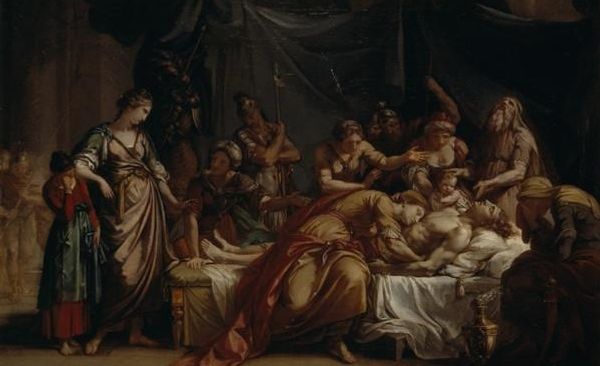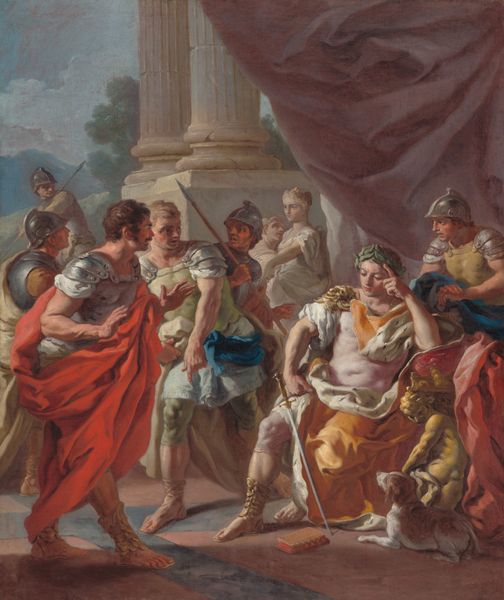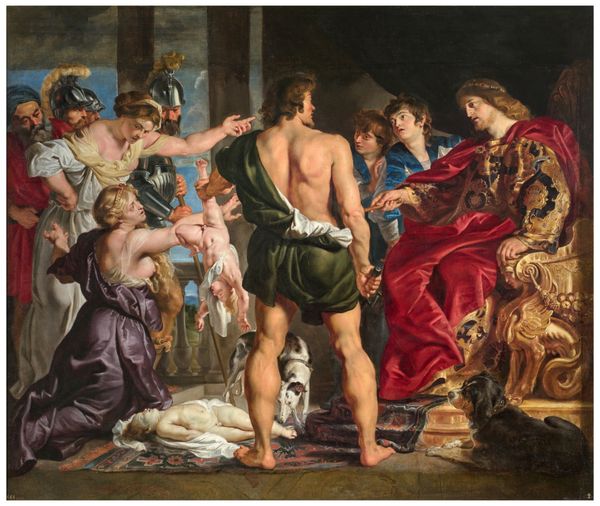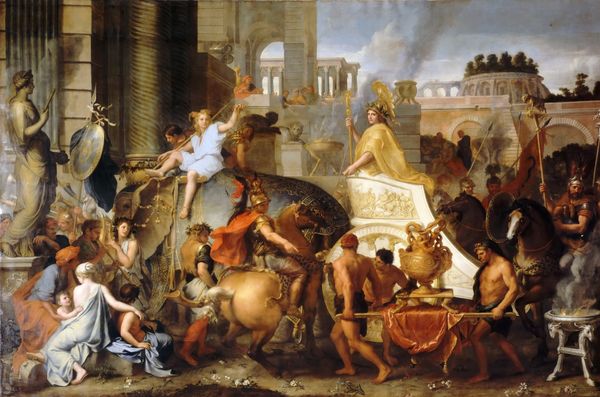
painting, oil-paint
#
portrait
#
figurative
#
neoclacissism
#
painting
#
oil-paint
#
figuration
#
history-painting
#
academic-art
Copyright: Public Domain: Artvee
Curator: Standing before us is Jacques-Louis David's "The Death of Seneca," created in 1773. Quite a chilling subject, isn't it? Editor: Absolutely, there’s something so theatrically morbid about it. That stark lighting really emphasizes Seneca's pale skin and the stark contrast with the dark backdrop. All this theatrical drama really makes you focus on his last moments. Curator: Yes, it's staged almost like a play. David uses the neoclassical style to draw on ancient Roman ideals. But beyond the historical recreation, look at how he conveys Seneca's stoicism in the face of death. He chooses to depict Seneca almost as an actor, presenting himself admirably. Editor: Interesting. For me it is all about process: think about the materiality of this. Oil paint was expensive! Commissions of this scale, not cheap. Who paid, who profited from Seneca's demise—who got this history painted? The marble columns dwarf the figures making you contemplate material legacy as Seneca departs it. I almost forget that I am considering this painting. I get so involved in what the actual painting does for our consideration. Curator: I do like how you always bring the materiality back! I get so lost in narrative I can miss how crucial production is to perception. This really pulls me back. Even in his supposed defiance of imperial power through suicide, Seneca can't escape commodification! And Seneca’s “tranquility” really resonates when considering the economic impact of making this painting! He almost looks beatific as his arteries are being cut! What did Seneca actually look like during these final moments? Probably a lot different than this calm. So interesting what details matter the most during production, and how these amplify perceptions later. Editor: Well, precisely! Neoclassicism loved that kind of idealization—smoothing away the rough edges. The focus on stoicism masks so many potential details. What color was the wine? The political discourse swirling amongst the figures? The answers are absent. So we center around only David's intention with the tools in his reach! Curator: And David truly masterfully utilized those tools, capturing a crucial scene through his classical lens. It's a painting that definitely sparks dialogue, that's for certain. Editor: Indeed! I never would have guessed it could spur so many questions. And there is no doubt the answers lay behind all the paints.
Comments
No comments
Be the first to comment and join the conversation on the ultimate creative platform.

